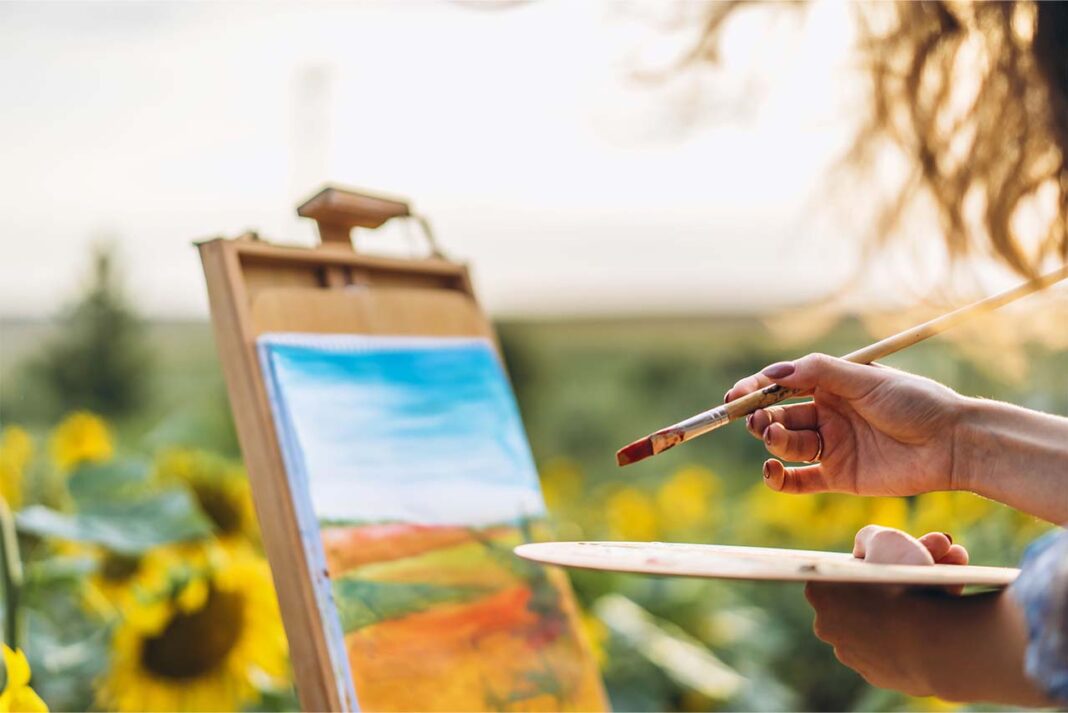The fast-paced rhythm of modern life often leads individuals to become disconnected from both nature and their inner worlds. This disconnection can contribute to psychological well-being challenges such as stress, anxiety, loneliness, and burnout. In recent years, a method that lies at the intersection of psychology, art, and ecology — eco-art therapy — has emerged as a compassionate and alternative approach to healing. Combining the restorative power of nature with creative expression, this form of therapy helps individuals reconnect with both their environment and their inner resources.
“Art reveals the hidden face of nature.”
— Kahlil Gibran
This quote beautifully captures the essence of eco-art therapy. It is a therapeutic approach that promotes psychological well-being through nature-based art practices. Merging the expressive power of art therapy with the relational depth of ecotherapy, participants create art using natural materials such as stones, leaves, soil, and water. Through this process, they find space to reflect their emotions, thoughts, and lived experiences (Buzzell & Chalquist, 2009).
At the core of this practice is the belief that nature is not just a setting, but an active and dynamic agent of healing. Numerous studies have shown that contact with nature reduces stress hormones, lowers heart rate and blood pressure, and enhances mental clarity (Bratman et al., 2015). When paired with art, this connection becomes more intentional, sensory, and emotionally resonant. For instance, a participant creating a collage from leaves gathered during a forest walk is not only engaging in aesthetic production but also expressing themselves, revisiting past experiences, and finding a metaphorical language for their inner challenges.
Eco-art therapy can be practiced individually, in group sessions, or in workshop settings. Especially in eco-friendly therapeutic spaces, these practices help foster a sense of belonging, social connection, and environmental awareness. In some cases, participants return their nature-based artworks back to the natural environment. This impermanence offers a powerful experience of embracing the cycles of life, loss, and transformation (McNiff, 2004).
Common practices in eco-art therapy include:
-
Creating collages with natural objects
-
Sculpting with sand, clay, or mud
-
Drawing mandalas on the ground
-
Making prints with leaves or bark textures
-
Creating a “visual journal” during nature walks
This method has been found especially effective in:
-
Reducing symptoms of anxiety and depression
-
Processing traumatic experiences
-
Supporting grief and loss
-
Enhancing attention and emotion regulation in children and adolescents
-
Cultivating a meaningful connection with life
One of the strongest aspects of eco-art therapy is its invitation for individuals to attune to “natural rhythms.” Seasonal changes, cycles in nature, processes of disintegration and regeneration can mirror and support the client’s internal experiences. In this way, therapy becomes not only a space for personal healing, but also a space for developing ecological awareness. Thus, eco-art therapy offers not only “healing” but also a call for “responsibility” and “living in harmony with nature.”
Eco-art therapy presents a creative and holistic path for those seeking relief from the psychological well-being burdens of modern life. When contact with nature meets artistic expression, individuals are enabled to build deeper connections with themselves and with the world around them. This bond strengthens not only personal mental health but also ecological consciousness.
In an increasingly complex and alienated world, eco-art therapy reminds us of something essential: Healing is often not far away—it may be found in the texture of a tree’s bark, the surface of a stone, or the silence of a fallen leaf. To sense this healing and make space for it may be one of the greatest acts of care we can offer to ourselves and to the world we live in.
“Look deep into nature, and then you will understand everything better.”
— Albert Einstein
References
-
Bratman, G. N., Hamilton, J. P., Hahn, K. S., Daily, G. C., & Gross, J. J. (2015). Nature experience reduces rumination and subgenual prefrontal cortex activation. Proceedings of the National Academy of Sciences, 112(28), 8567–8572. https://doi.org/10.1073/pnas.1510459112
-
Buzzell, L., & Chalquist, C. (2009). Ecotherapy: Healing with nature in mind. Sierra Club Books.
-
McNiff, S. (2004). Art heals: How creativity cures the soul. Shambhala Publications.


